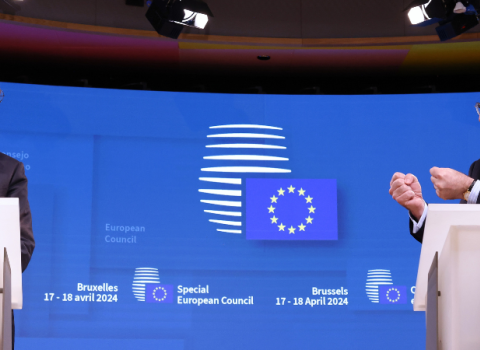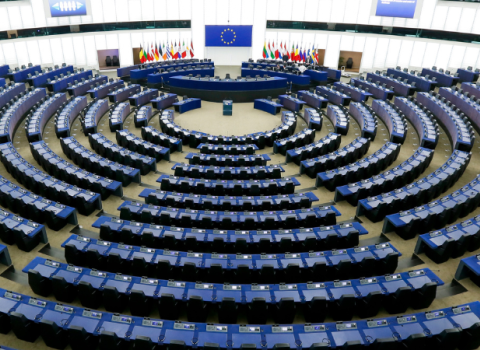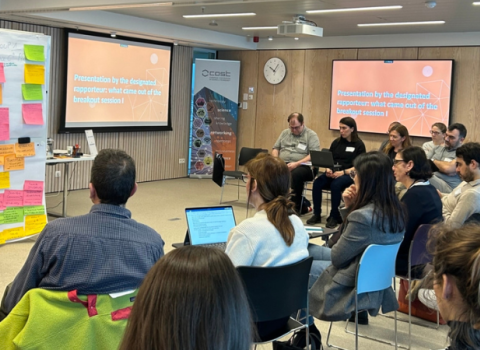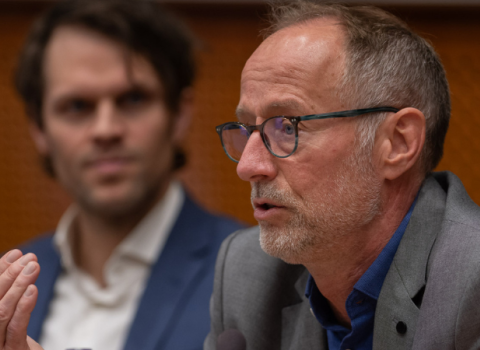As the consultation on the EU’s biggest ever research programme closes today, Science|Business takes a look at the feedback on how Horizon Europe can be improved - and the extent to which this will shape its successor
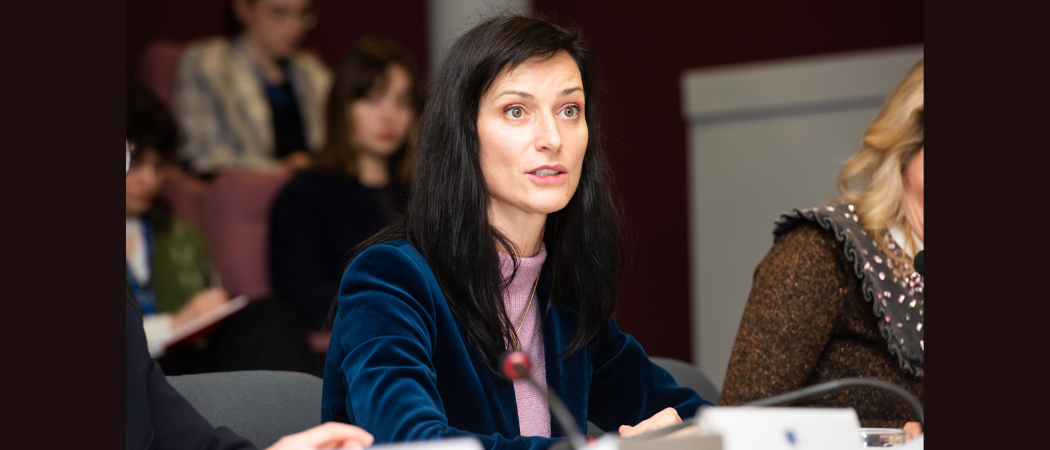
European research Commissioner Mariya Gabriel launched the public consultation to review Horizon 2020 and Horizon Europe on 1 December 2022. Photo: Aurore Martignoni / European Union
The EU research community has said it loud and clear: it wants the EU’s research programmes to grow, with a clear vision and a good balance between different types of science.
Over the past three months, the European Commission ran a consultation of the past, present and future of EU research programmes, asking stakeholders around Europe to help map the way forward. The consultation, which closes today, will feed into the strategic plan for the second half of the EU’s current €95.5 billion Horizon Europe research programme, as well as the planning for its successor, which is about to kick off.
The exercise, and the work that follows, will draw the first outline of the 10th EU research programme, which is due to start in 2028. For EU research policy bubble this marks the beginning of a long lobbying battle, and the consultation was the first chance to get ideas in.
As with any EU programme, the first big issue is the budget. Researchers want as much money as possible for what is currently referred to as Framework Programme 10 (FP10), but EU member states which foot the bill tend to be frugal.
This time is no different, with research lobby groups calling for an ambitious new budget in 2028. The Netherlands House for Education and Research urged the EU to at least double the budget for FP10 to €200 billion, in its submission to the Commission’s consultation.
Many other groups echoed the sentiment, and asked the Commission to be smart about how it spends the money. The EU-LIFE alliance of life sciences research centres called for a realistic approach to the next budget, ensuring that the scope of the programme matches the available funds.
The other three common demands for the budget are: stability, flexibility and simplicity. The research community wants the Commission to be able to shift the money around if needed, while also ensuring stable funding for all the different types of research. In all this, the programme should be simple, both operationally and politically.
“We support that the Commission maintains its flexibility within the budget to be able to quickly respond to crises, as was excellently shown during the pandemic,” the Stockholm Trio of universities said it its feedback to the Commission.
Beyond the budget, the demand is simple: let the things that don’t work die. The Commission has a tendency to come up with new tools for supporting research, and this can lead to great initiatives. But sometimes it has a tough time letting go of what doesn’t work. The League of European Research Universities (LERU) told the Commission, “It is necessary to carefully evaluate new tools, initiatives and approaches and dare to adjust or discontinue what is not deemed successful.”
To fix by 2028
Lobbying starts now, but we have five years to go before the next EU framework programme starts. In the meantime, the research community has set out a list of demands on how to run the second half of Horizon Europe better.
Basic versus applied: The key problem in Horizon Europe is an imbalance between applied and basic research. The programme has high ambitions, setting the foundations for the EU’s green and digital future, but this has caused it to be focused on applied, near-market research and innovation, neglecting lower technology readiness levels (TRLs). Most stakeholders are calling on the Commission to restore the balance in the second half of Horizon Europe, and beyond.
This applies to both Pillar I of Horizon Europe, focused on excellence science, and Pillar II, which covers big collaborative research projects.
When it comes to excellent science, funding must increase “in overall and relative terms,” according to the Guild of European Research-Intensive Universities. This means more money for the currently €16 billion frontier research fund, the European Research Council, and the researcher mobility programme, the Marie Skłodowska-Curie Actions (MSCA).
In Pillar II of the programme, lobby groups want to see a better overall balance between TRLs, and in particular support the introduction of more funding for interdisciplinary collaborative fundamental research aimed at understanding and tackling complex societal and global challenges.
While the TRLs in Horizon went up, the size of the projects also increased, leading to greater complexity. Many are unhappy and want smaller grants reintroduced to the programme. “Clear feedback is: this has not lead to efficiency,” the European Association of Research and Technology Organisations (EARTO) told the Commission. “It has led to a more complex coordination of the projects and increased administrative burden.”
In the end, it’s about being smart about the expected impact of the projects. What the Commission needs is “a coherent portfolio impact approach instead of aiming for too broad, to big individual projects that are unrealistic and/or too hard to implement,” according to EU-LIFE.
Too many requirements: As projects grew in size, the Commission also added a myriad of new requirements each application must meet. This includes gender equality plans, data management plans, ensuring the project does no harm to the environment, respect for open science principles, to name a few.
This is making the already long and burdensome application process even more costly. EARTO asks the Commission to assess which of these requirements actually have an impact on proposal quality and implementation.
At the same time, the application template for Horizon Europe calls is still not as effective as it could be. The European Association of Innovation Consultants (EAIC) calls on the Commission to optimise its design, which could help raise “the overall quality of proposals received by evaluators and ultimately ensure that the best projects are awarded funding.”
And these changes should be accompanied by one document that the research community has been waiting on for a few years: the full annotated model grant agreement (AGA), an explainer for the complex agreements researchers are expected to sign to receive their funding.
Lump sums: The roll out of a new less-strings-attached type of funding remains one of the most contentious issues in Horizon Europe. The Commission promises a wider roll out of the new type of grants in the next few year, but the research community widely agrees it’s too early.
The reason for this is the belief that there’s too little evidence lump sum funding simplifies the lives of beneficiaries. They mean less paperwork for the Commission and less tracking of expenses, but much of the burden of calculating costs falls on the applicants at the proposal stage.
Another issue highlighted by lobby groups is trouble calculating salaries for researchers and staff on lump sum projects. The Commission has a system but its estimates quickly become outdated as inflation rises and employers adjust wages. According to recent feedback from EARTO’s members, “the average median amount is much too low.”
